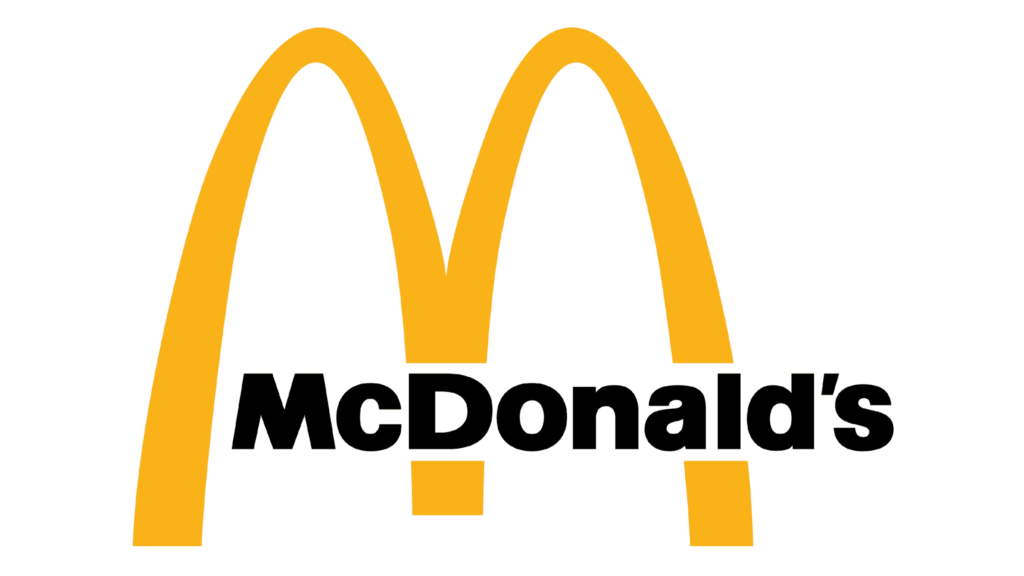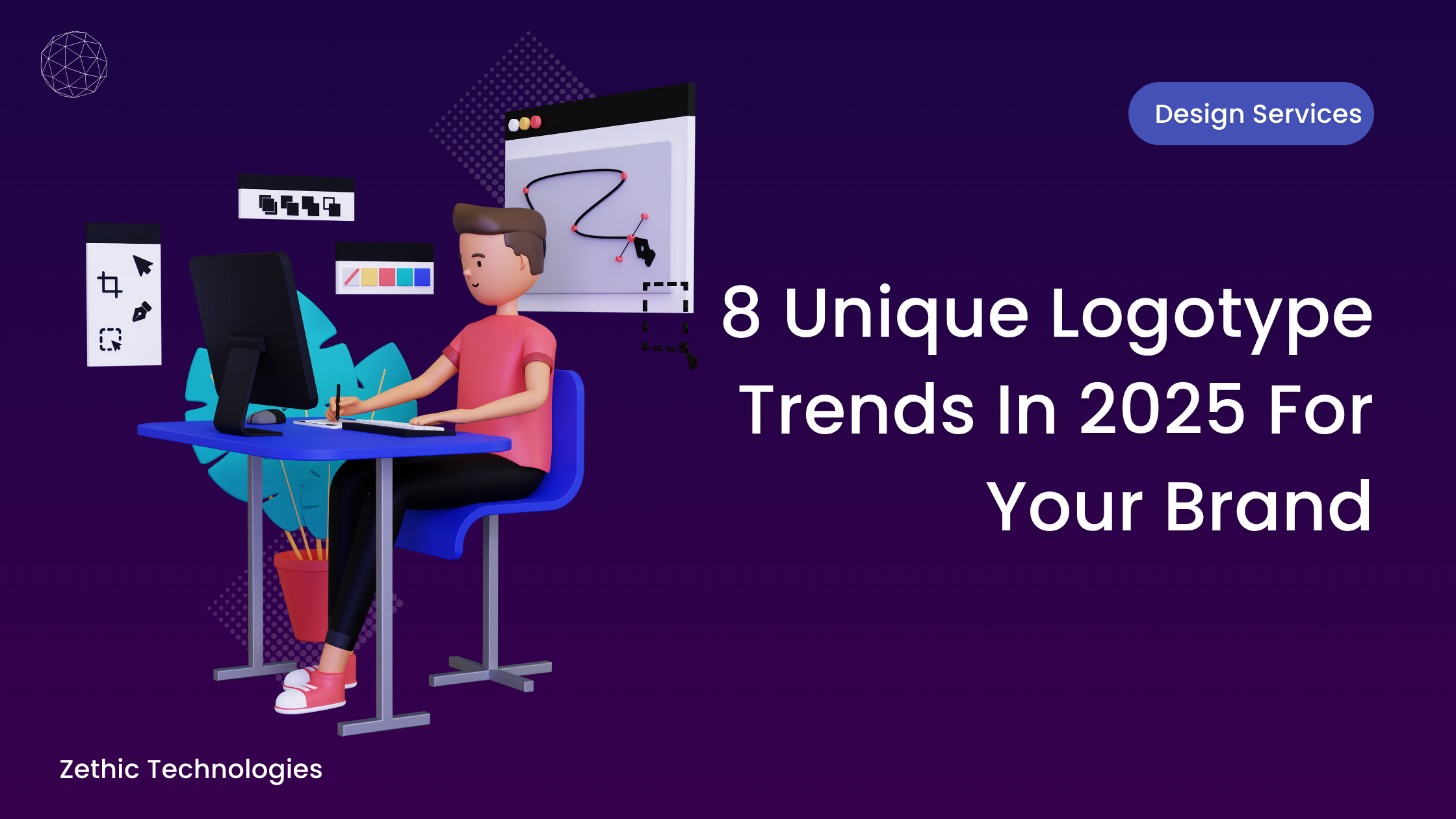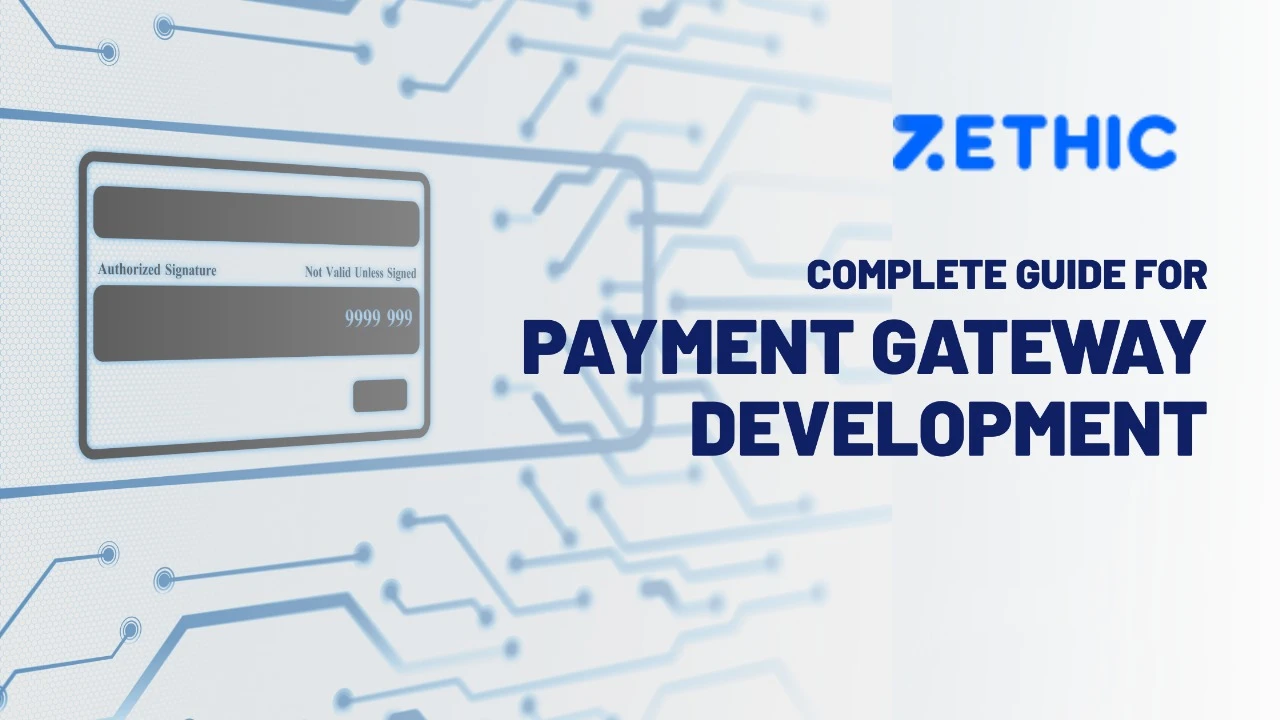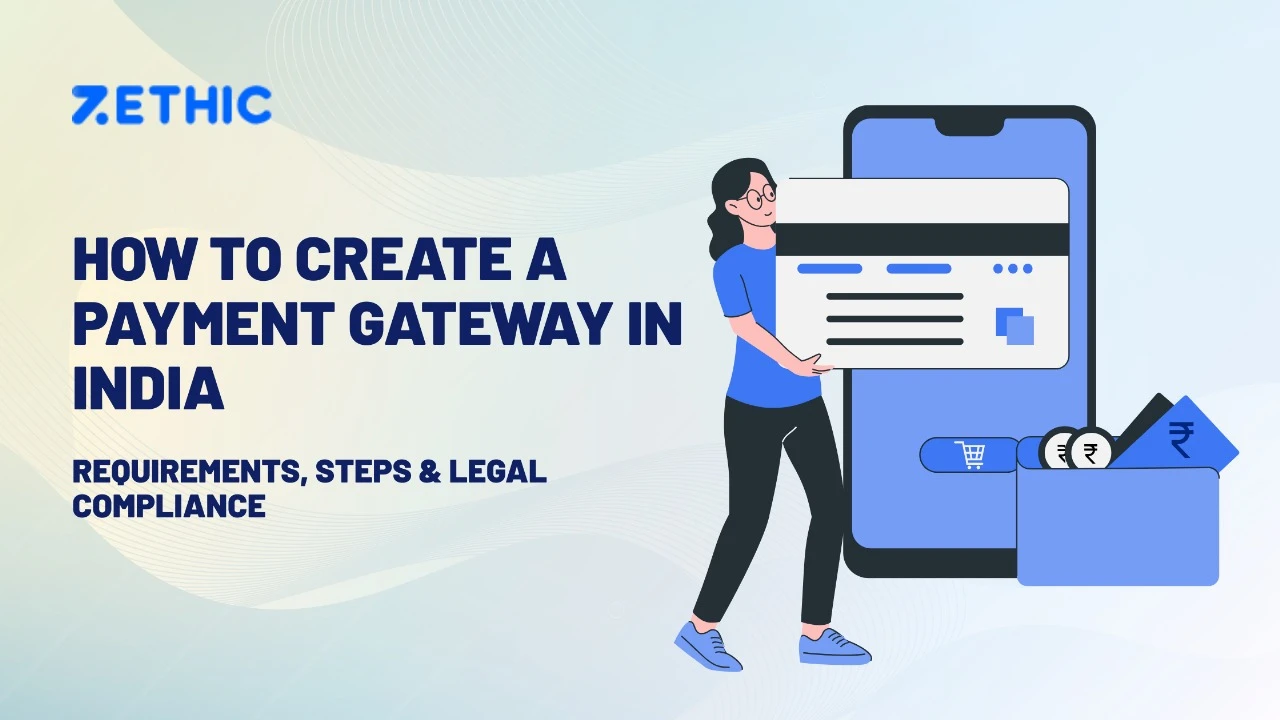Key Takeaways
- Follow logotype trends that align with your brand’s function, not just what looks new.
- Remember users judge your logo in 0.05 seconds—clarity always wins.
- Use visual recall tests to check if your logo actually sticks in people’s minds.
- Treat your logo as a UX element that should work across devices, not just on a brand deck.
It takes just 0.05 seconds for users to form an opinion about your website—and your logo is the first thing they judge. Still, too many brands are out here rolling with logos that belong in a 2012 PowerPoint template. Big players like Burberry, Nokia, and Kia have all evolved their logotypes in the last few years. If you haven’t rethought yours since college, you’re not building a brand—you’re running on fumes.
Most founders and marketers think a logo is a one-time job. It’s not. It’s a living asset. In 2025, logotype trends aren’t just about looking “cool”; they’re about building trust in milliseconds and standing out in a hyper-scroll world. If your logo doesn’t align with current UX design logos or popular trends in logo design, it’s working against your brand.
This blog won’t preach. It’ll show you exactly what’s working—and why you need to stop clinging to that outdated brand mark.
8 Most Popular Logotype Trends In 2025 For Your Brand
Most people judge your brand logo faster than they skip a YouTube ad—we’re talking milliseconds. But 75% of users judge a company’s credibility based on its design alone (Stanford Web Credibility Study). And still, most businesses treat their logotype like it’s an afterthought. Bold Helvetica, a random icon, done. That might’ve worked in 2010. Today? It’s brand suicide.
So, here are 8 logotype trends your brand must be asking for:
1. Mix and Match Type
Welcome to the era where fonts misbehave—and thank god they do. In 2025, Mix and Match typography is one of the most refreshing trends in logo design, giving brands a rebellious edge without losing clarity. Serif meets sans-serif. Bold rubs shoulders with light. Tall dances with wide. It’s chaotic on paper but charismatic in execution.
This style works because it breaks visual predictability. When done right, it creates contrast, hierarchy, and character—all in one glance. It’s especially powerful in logotypes where the name alone carries the brand. From a UX design logo perspective, this approach pulls in the eye, boosts retention, and leaves a visual signature that feels modern yet intentional. Not messy—memorable.
2. Minimalist & Simple Wordmarks
Yes, it’s still trending—and no, it’s not boring when done right. In 2025, Minimalist logotypes are smarter, not just simpler. Clean lines, negative space, and subtle tweaks in typography are doing more heavy lifting than ever. It’s not about stripping things down blindly—it’s about removing everything that doesn’t serve the brand.
Why does this still work? Because simple scales. Minimal logos load faster, look sharper on mobile, and pass Google’s UX checks with flying colors. Plus, in a landscape cluttered with gradients, animations, and visual noise, simplicity builds trust. It tells the audience, “We know who we are. No gimmicks needed.”
3. Eco-Conscious Design
In 2025, eco-conscious logotypes are all about soft color palettes (think earthy greens, muted browns, and recycled paper tones), lowercase typography, and natural, unpolished font styles. The goal? To visually communicate responsibility, calm, and grounded values—without saying a word.
But it’s not just a “look.” Brands are backing it with intent. Lighter file formats for faster load times (hello, carbon-efficient websites), accessible contrast ratios, and scalable SVG logotypes are part of the strategy. This aligns perfectly with current UX design logo principles and Google’s push for performance + purpose. It’s not a design trend—it’s a brand philosophy.
4. Etched Emblems
Old-school is making a serious comeback—with a sharp, modern twist. Etched emblem logos are re-emerging in 2025 as a nod to craftsmanship, heritage, and permanence. Think fine-line engravings, vintage stamp-style wordmarks, and intricate monograms that look like they belong on whiskey bottles or leather-bound ledgers. Except now, they’re popping up in fashion tech, boutique agencies, and even clean beauty brands.
This trend hits different because it tells a story instantly. While most logos aim for sleek and fast, etched emblems lean into texture, depth, and nostalgia. And surprisingly, when optimized in SVG format and kept monochrome, they load fast, scale beautifully, and boost brand memory. It’s traditional design, re-engineered for modern UX.
5. Geometric & Abstract Forms
76% of top-performing logos in tech and fintech use geometric shapes—not a coincidence. In 2025, geometric and abstract logotypes are dominating industries that thrive on structure, clarity, and innovation. Think circles for unity, triangles for motion, and squares for trust—used in subtle, abstract ways to build meaning without being too literal.
This trend works best for startups, SaaS products, blockchain firms, and architecture studios. Why? Because geometry communicates logic. Abstract forms add mystery. Together, they create logos that feel intentional and scalable—across mobile apps, dashboards, and pitch decks. Plus, from a UX perspective, they’re clean, adaptable, and work brilliantly in low-space environments like favicons and footers.
6. Fun & Chunky Wordmarks
According to a 2024 Dribbble report, logos with bold, playful typefaces saw 32% higher engagement on social platforms compared to thin or minimal styles. In 2025, Fun and Chunky logotypes are exploding—especially in industries that thrive on personality: food & beverage, D2C lifestyle brands, kids’ products, entertainment, and creator-led startups.

These logos are oversized, curvy, colorful, and impossible to ignore. They don’t whisper brand identity—they yell it, joyfully. Perfect for mobile, packaging, merch, and social icons, chunky typefaces also improve readability in micro-interactions. From a UX standpoint, they’re practical. From a branding lens, they’re magnetic. Playful is no longer unprofessional—it’s unforgettable.
7. Waves & Fades
In 2025, Waves and Fades are redefining how movement and emotion are built into logos. Smooth color transitions, flowing letterforms, and liquid-inspired designs are showing up in industries like wellness, beauty, Web3, AI, and clean tech—spaces where fluidity, evolution, and “future-forward” are core to the brand.

Gradient-based logos have seen a 41% increase in brand recall when paired with simple typography (Source: Looka, 2024). From a UX angle, waves and fades create visual flow, which keeps the user’s eye moving—a small but powerful retention trick. Bonus? When done right in SVG or CSS, these logos don’t slow down your load speed either. It’s visual storytelling—with motion built in.
8. 3D Gradients & Holographic Effects
Flat design had its run—2025 is all about depth. 3D gradients and holographic logotypes are taking over futuristic industries like gaming, AR/VR, AI tools, fintech apps, and digital fashion. These logos shimmer, shift, and look like they’re alive—especially on screens. They’re not just visual identities; they’re experiences.

According to a 2024 Adobe survey, 3D-styled logos increased user interaction by 28% on mobile-first brands. Why? Because motion-like depth adds intrigue. When paired with clean UX and responsive design, these logos catch attention without overwhelming. Just keep them light (SVG > PNG) and optimized. Done right, they feel like branding from the future—because they are.
How To Know What Suits Your Brand?
Everything looks cool, nothing tells you what actually works, and you’re left wondering if Comic Sans ironically fits your startup. Spoiler: it doesn’t. In 2025, logo trends aren’t about looking trendy—they’re about fitting your brand’s function, platform, and audience behavior. And sadly, most businesses still wing it with moodboards and vague “vibe checks.”
Here’s how to stop guessing and actually match the right logotype trend to your brand—with data, intent, and some uncomfortable truth bombs:
1. Audit Your Product’s User Journey First
Before you even open a Figma file, map out exactly where your logo shows up. App header? Mobile nav? Printed label? Full-screen launch page? Each of these touchpoints demands a different level of clarity and responsiveness. A bold emblem might work on a billboard but break in a mobile footer.
This is where UX design logo logic matters. Brands with high mobile traffic should lean toward flexible, minimal logos. Brands selling physical products? You’ve got more room for artistic expression. Your logo doesn’t live in isolation—it’s a UX asset. Treat it like one.
2. Align With Industry Trends—But Don’t Copy Them Blindly
Yes, staying updated with current logo refresh trends matters. No, you shouldn’t blindly copy what a billion-dollar company just did. What’s popular in logo design right now in fintech (geometric, flat, safe) is very different from what’s working in creator economy (chunky, playful, informal).
Use trend signals to steer—not define—your direction. Study how logotype trends shift across categories: what’s emerging, what’s peaking, and what’s already burnt out. Adapt, don’t adopt. You’re not trying to be Nike. You’re trying to be remembered.
3. Test Visual Recall—Not Just Aesthetics
Looking “good” is not enough. Your logo needs to be remembered after one glance. That’s where recall testing beats creative intuition. Create 2–3 logo prototypes. Show them to 10–15 non-designers for 3 seconds. Wait 10 minutes. Ask them to draw what they remember.
This micro-test will show you if your design holds any visual equity at all. This is especially useful when choosing between trends in logo design that are subtle vs bold. Most people won’t remember your gradients, but they will remember an unexpected typeface or an unusual silhouette.
4. Reverse Engineer Your Brand Voice Into Type
Your logo should sound like your brand—without audio. A formal serif screams legacy and trust. A rounded sans serif says friendly and digital-first. A lowercase wordmark often feels approachable; all caps? Assertive. Typography isn’t decoration—it’s language in visual form.
The best logo trends in 2025 are not based on “looks cool” anymore. They’re built to translate tone into typography. So define your brand voice first (3 adjectives max), then reverse-engineer it into your logo style. This way, your logotype becomes a true brand messenger—not just a badge.
The Takeaway Moment
They evolve as fast as your audience scrolls. The truth is, your brand doesn’t need to follow every new design wave, but it can’t afford to stay stuck either. In 2025, logotype trends are less about decoration and more about direction. They show how your brand moves, adapts, and connects in real time.
Most logos look sharp in presentations but collapse in the real world—unclear on mobile, forgettable in scrolls, and impossible to scale. Zethic skips the fluff. We design logos built for real use, real screens, and real users. Book a free consultation and give your brand a mark that actually works.
People Also Ask
What is the main style dominating logo design in 2025?
Minimalism continues to dominate, focusing on simplicity, clear shapes, and effective use of negative space for striking visuals
Are 3D elements still popular in logo design this year?
Yes, 3D logos and motion graphics are trending, adding depth, shadows, and a tangible feel to logos for more engagement
How important is sustainability in 2025’s logos?
Eco-conscious, nature-inspired patterns and textures reflecting environmental responsibility strongly influence logos, appealing to green-minded consumers
What role do typography trends play in 2025 logo design?
Custom and intervened typography is key, with brands emphasizing unique fonts and playful monograms to create distinctive, memorable identities
Are logos adapting to multiple digital platforms?
Yes, adaptive and responsive logos are essential, dynamically adjusting to various screen sizes and media for consistent brand presentation






